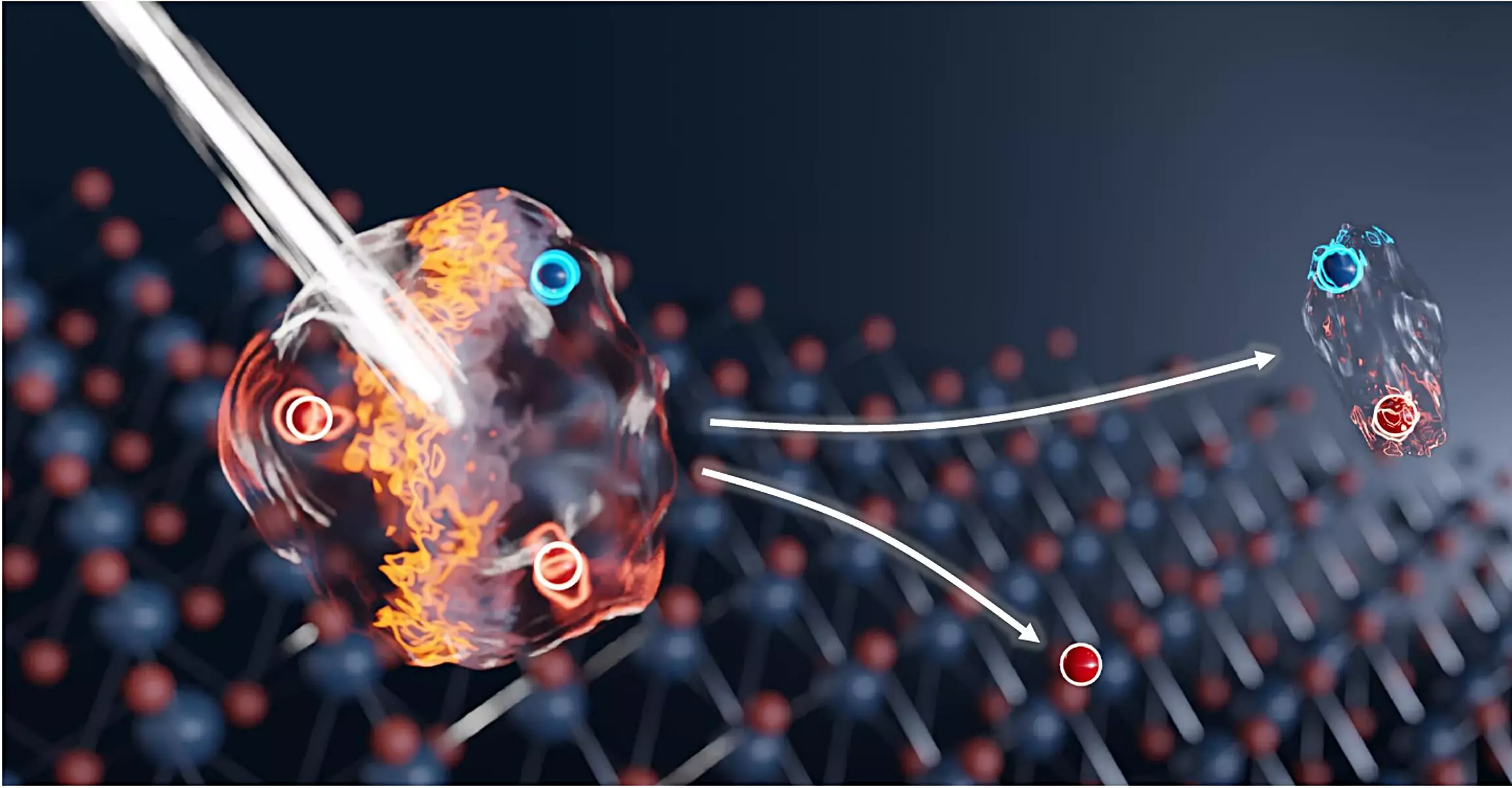The realm of materials science has seen an exciting surge in research focused on two-dimensional (2D) materials, which are only a few atomic layers thick. This research is particularly significant in the context of electronics and quantum technologies, where novel physical properties can emerge from such thin materials. An international collaborative study led by scientists at the Technical University of Dresden has presented groundbreaking findings that may transform how we approach optical data processing and flexible detection technologies. The implications of these findings, published in the prestigious journal Nature Photonics, are vast and could lead to numerous advancements in both theoretical and applied physics.
At the heart of this research lies the fascinating behavior of excitons and trions. An exciton is a quasi-particle formed when an electron, after being energized, leaves its original position—thereby creating a positively charged “hole.” This bound state is significant because it showcases the unique properties that arise in 2D semiconductors compared to larger, bulk crystals. By efficiently creating excitons, researchers set the stage for examining their interactions with other particles.
Further complicating this interaction is the formation of trions—a three-particle state where an exciton captures an additional electron. Notably, trions represent a synergy of electrical charge and strong light emission, ideal for combined electronic and optical control. This intrinsic relationship between excitons and trions has led to increased interest in their switching capabilities, with previous efforts revealing limitations associated with switching speed.
The research team, spearheaded by Professor Alexey Chernikov alongside Dr. Stephan Winnerl from the Helmholtz-Zentrum Dresden-Rossendorf (HZDR), represents a confluence of expertise that spans multiple countries, including contributions from research institutions in Marburg, Rome, Stockholm, and Tsukuba. Leveraging advanced facilities at the HZDR, they employed the FELBE free-electron laser—a powerful tool capable of delivering intense terahertz pulses—to conduct their experiments.
Under cryogenic temperatures, the researchers subjected a mono-layer of molybdenum diselenide to short laser pulses to generate excitons rapidly. Following this, they utilized terahertz radiation to induce rapid switching from trions back to excitons. Winnerl describes the process, highlighting that the specific terahertz pulse frequency effectively severed the bond between the electron and the exciton, resulting in their reformation at unprecedented speeds.
The quantum leap in switching speed achieved during the experiment is noteworthy—occurring within a staggering timeframe of a few picoseconds, which is nearly a thousand times faster than traditional electronic methods. Such rapid switching could revolutionize how data is processed and transmitted, expanding opportunities for new modular designs that can seamlessly integrate electronic control with optical data encoding.
Chernikov emphasizes the importance of these findings, advocating for future research directions that may extend to varying electronic states and complex materials. This opens the door to investigating unusual quantum states of matter that arise from strong particle interactions and could operate at room temperatures, enhancing the practicality of these theoretical concepts for everyday applications.
One of the most promising applications of these advancements lies in sensor technology and optical data processing. The ability to switch between excitons and trions rapidly suggests the potential for developing flexible modulators that capitalize on these 2D materials. Such modulators could facilitate the creation of compact components capable of electronically managing optically encoded information, significantly enhancing the performance of next-generation devices.
Additionally, the study indicates the feasibility of developing sophisticated detectors capable of functioning in the terahertz frequency range. Chernikov envisions the birth of terahertz cameras characterized by high pixel density, which would allow for enhanced detection and imaging capabilities tailored to technological needs. With this framework, even low-intensity signals could trigger rapid switching processes, suggesting a wide range of applications across various scientific and industrial fields.
The remarkable findings from TU Dresden’s research team illustrate the transformative potential of two-dimensional materials in advancing quantum technologies. The profound interaction of excitons and trions, coupled with unprecedented switching speeds, positions these semi-conductors as a cornerstone for future technological innovations. As the scientific community continues to explore these phenomena, we may see the development of novel applications that redefine our understanding of material properties, sensors, and data processing mechanisms. The journey into the quantum realm continues, with 2D materials at the forefront of exploration.


Leave a Reply